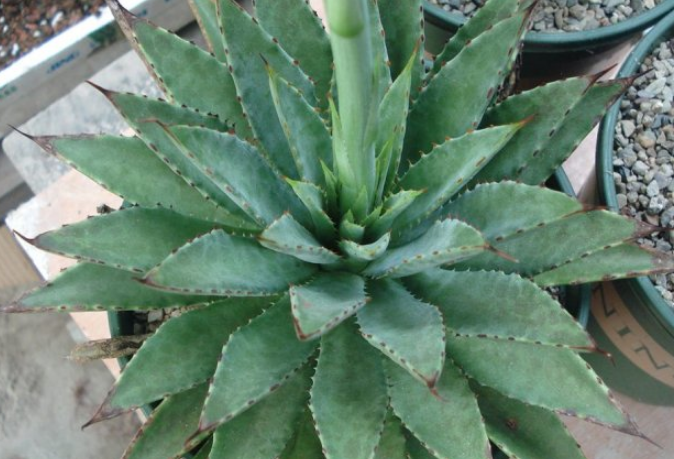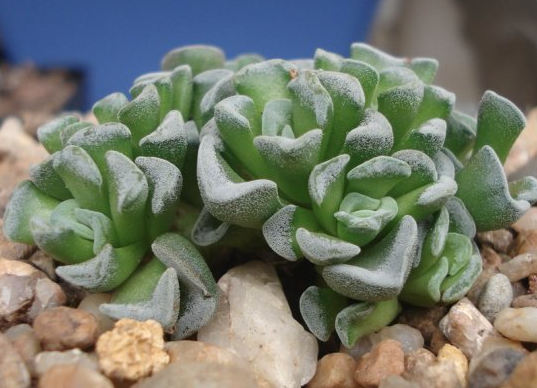How to maintain the root plant "cliff queen"
Cliff queen Sinningia leucotricha, Gesneriaceae of Gesneriaceae (Sinningia), native to Brazil, cliff queen also known as lunar feast, formerly known as Rechsteineria leucotricha, has now been merged into the genus Euphorbia. The cliff queen is a perennial succulent herb of Gesneriaceae. The plant has globular or sweet potato-like fleshy roots, yellow-brown epidermis, fibrous roots, green branches clustered at the top, 20-30cm high, and short white hairs densely on the surface of the branches.

Leaves born on the upper part of branches, elliptic or long-elliptic, alternate, entire, apex pointed, green, leaves 8 to 12 cm long and 4 to 6 cm wide, densely thick white tomentose and glossy. Peanuts bloom in clusters at the top of the branches, the kaleidoscope is thin, 3 to 4 cm long, about 2 cm in diameter, the petal apex is slightly curved, orange or scarlet, the bud is covered with white villi, blooming from late spring to early autumn.
Cliff queen needs plenty of sunshine and cool, dry environment, resistant to semi-shade, afraid of waterlogging, avoid muggy and humid. It has the habit of growing in cool season and dormant at high temperature in summer and low temperature in winter. The peak growing season is from September to December and from March to July every year (the environment of flower friends is different, and the growing period is also short). The plants that grow in sunny places are short and sturdy, and the arrangement between leaves is more compact, and the cliff queen is unhappy. The cliff queen of the editor is raised in a sunny room. During the growing period, it is necessary to keep the soil slightly wet and avoid stagnant water.
The soil editor used cinder mixed peat, a small amount of perlite, the proportion of about 6:3:1, the soil surface covered with clean granular river sand. The cliff queen can withstand the low temperature of minus 2 degrees Celsius when the basin soil is dry, which is the indoor temperature, not in the open air. The water is basically cut off throughout the winter, the water will begin to be cut off below 5 degrees, and try to keep it above 0 degrees in winter, otherwise the bulbs are easy to die from frostbite and are not very resistant to freezing, as long as the temperature is suitable for winter, they can grow normally and will not dormant. When the summer temperature exceeded 35 ℃, the growth of the whole plant basically stagnated. At this time, watering should be reduced to prevent root rot caused by excessive moisture in the basin soil. And strengthen ventilation, proper shading, avoid hot sun exposure, the whole summer basically like this conservation, it is worth noting that in summer, the editor is not the whole season is cut off water, is only a small amount of water, otherwise the leaves are easy to dry up and fall, watering only on the edge of the basin, about 2 times a month, in the evening around 7-9 o'clock water supply, by this time the sun has gone down, will not affect the roots of plants. To avoid long-term rain in cultivation, otherwise the stem will rot, as long as the temperature is right summer cliff queen is basically not dormant, but the growth is slow, the leaves will not dry up.
After dormant, the cliff queen plant should cut off the dry branches, leave the sphere in the basin, and try not to provide water during the dormancy period (of course, flower friends can't let it go dormant all the time, and a small amount of water should be used to wake it up when the temperature drops). Wait for the ball to grow leaves before gradually restoring the water supply. The cliff queen is relatively slow to grow. It is enough to change the basin once every 2-4 years, and change the basin before watering for the first time in early spring. The reproduction of the cliff queen is basically sowing. After changing pots and supplying water in early spring, the plant will slowly have a bud. The cliff queen is a self-flowering variety and can bear seeds on her own. Of course, it would be better if she could cross-pollinate. This improves the germination rate and disease resistance of seeds.
Time: 2019-04-15 Click:
- Prev

How to maintain Drimiaundulata of wrinkled bulbous plants
Wrinkled bulb Drimiaundulata, Hyacinthaceae, Drimia, origin of South Africa, like cool, moist and sunny environment, afraid of hot and humid, resistant to semi-shade, but also resistant to drought, have certain cold tolerance
- Next

Gethyllislinearis Spring Grass sowing Diary
I had just harvested the seeds of Gethyllislinearis spring grass, so I sowed the seeds immediately. Today, the weather is fine. This time I used a small pot to sow seeds with more than half of the kite's own mixed soil.
Related
- Fuxing push coffee new agricultural production and marketing class: lack of small-scale processing plants
- Jujube rice field leisure farm deep ploughing Yilan for five years to create a space for organic food and play
- Nongyu Farm-A trial of organic papaya for brave women with advanced technology
- Four points for attention in the prevention and control of diseases and insect pests of edible fungi
- How to add nutrient solution to Edible Fungi
- Is there any good way to control edible fungus mites?
- Open Inoculation Technology of Edible Fungi
- Is there any clever way to use fertilizer for edible fungus in winter?
- What agents are used to kill the pathogens of edible fungi in the mushroom shed?
- Rapid drying of Edible Fungi

